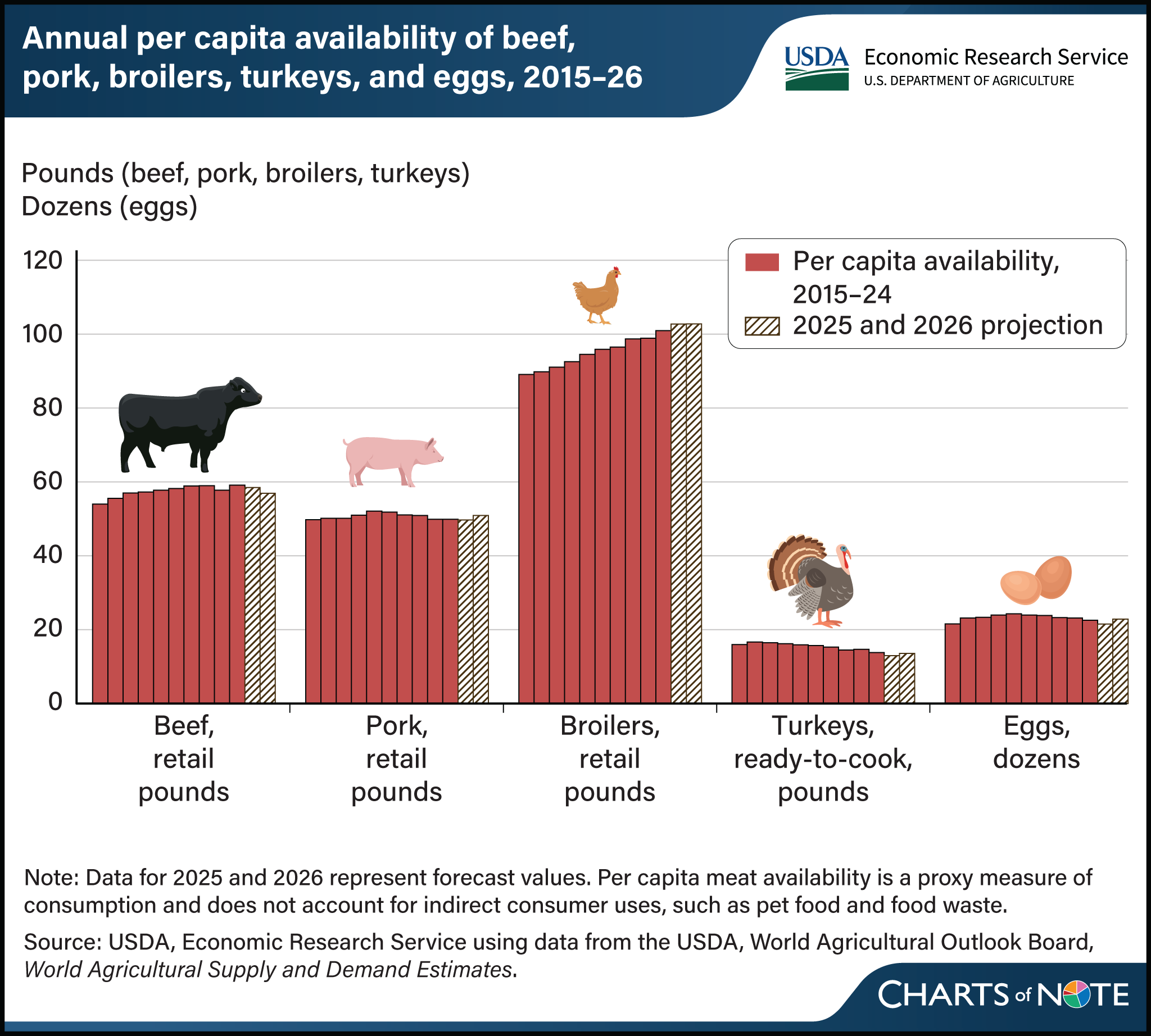Per capita availability of red meat and poultry projected higher in 2025 and 2026
- by Grace Grossen
- 8/21/2025

In 2025, domestic availability of red meat, poultry, and eggs is projected to increase, driven by gains in chicken and pork availability, and is expected to rise further in 2026. This increase is drawn from USDA’s forecast of per capita supply available for use on the domestic market. Availability, also known as disappearance, serves as a proxy for consumption and includes fresh and processed meat and eggs sold through grocery stores and used in restaurants. The latest USDA data indicate 226 pounds of red meat and poultry and about 22 dozen eggs are available per U.S. consumer in 2025. By 2026, per capita availability is forecast to increase to 227 pounds for red meat and poultry and to 23 dozen eggs. For chicken, per capita availability of broiler meat has been growing for many years and is projected to reach 102.7 pounds in 2025 and 102.8 pounds in 2026, making it the most consumed animal product in the United States. Availability of turkey, by comparison, has been falling in recent years and is projected to reach a low of 13.0 pounds per person in 2025 but increase to 13.6 pounds in 2026. Per capita beef availability for 2025 is projected to be slightly lower than 2024 at 58.5 pounds, but is projected to decrease further to 56.9 pounds per person in 2026. Pork availability per capita is projected at 49.7 pounds in 2025 and 50.9 pounds in 2026, up from 49.9 pounds in 2024. Per capita table egg availability for 2025 is projected at 21.5 dozen and is projected to increase to 22.9 dozen per person in 2026. This chart is drawn from the USDA, Economic Research Service’s Livestock, Dairy, and Poultry Outlook, August 2025.

